Abstract
Eight pigeons were trained to discriminate between sets of color photographs of natural scenes. The scenes differed along five two-valued dimensions (site, weather, camera distance, camera orientation, and camera height), and all combinations of the feature values were used. One value of each dimension was designated as positive, and slides containing three or more positive feature values were members of the positive stimulus set. Thus, each feature had an equal, low, correlation with reinforcement, and all features had zero correlations with each other. Seven of the 8 pigeons learned this discrimination, and their responding came under the control of all five features. Within the positive and negative stimulus sets, response rates were higher to stimuli that contained more positive feature values. Once discrimination had been achieved, reversal training was given using a subset of the slides. In this subset, only a single feature was correlated with reinforcement. All pigeons learned this reversal successfully and generalized it to additional photographs with the same feature content. After reversal, the original reinforcement contingencies were reinstated, and training was continued using all the slides except those that had been used in reversal. Reversal generalized to these slides to some extent. Analysis of the response rates to individual slides showed that, compared with prereversal training, only the feature that had been subjected to reversal contingencies showed a reversed correlation with response rate. The remaining features showed the same correlation with response rate as they had before reversal training. Thus, reversal on some members of a category following category discrimination training led to generalization to stimuli within the category that were not involved in the reversal, but not to features that were not reversed. It is therefore inappropriate to refer to the pigeons as learning a concept.
Keywords: concept discrimination, discrimination reversal, feature analysis, equivalence class, polymorphous concepts, photographs, key peck, pigeons
Full text
PDF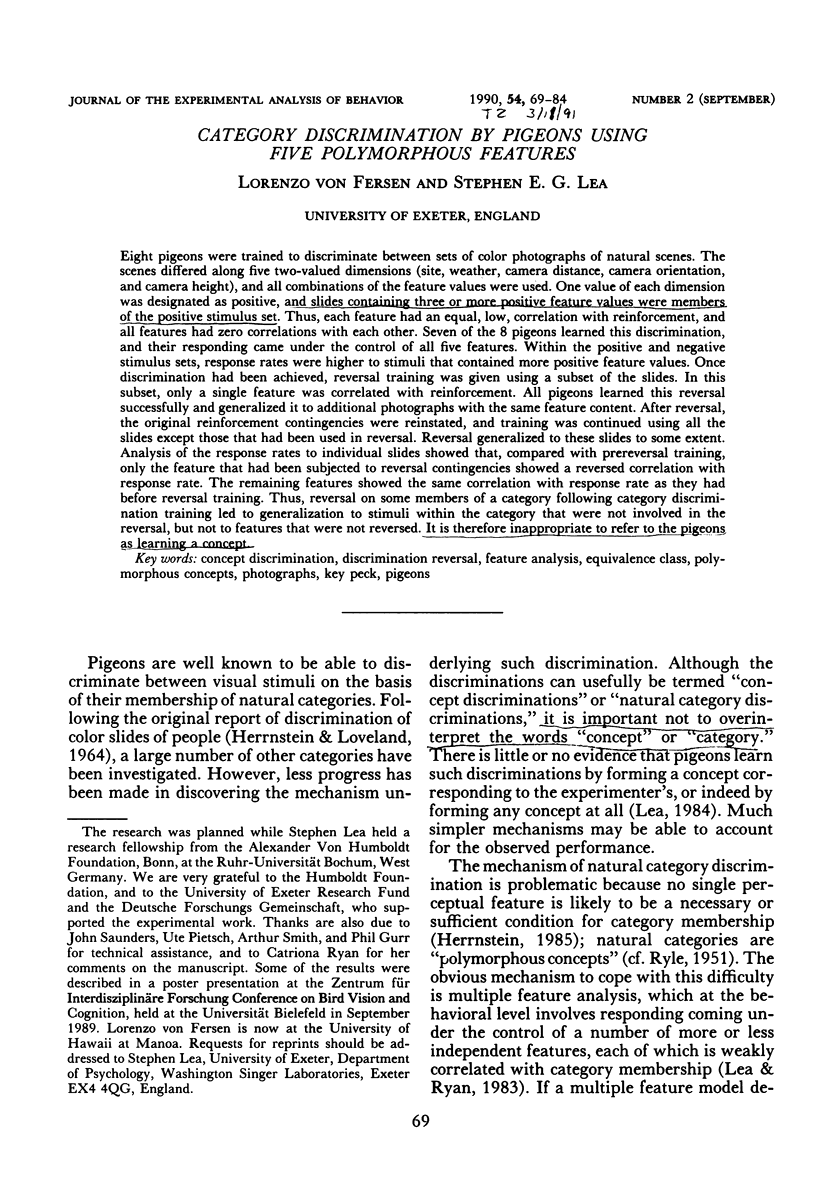


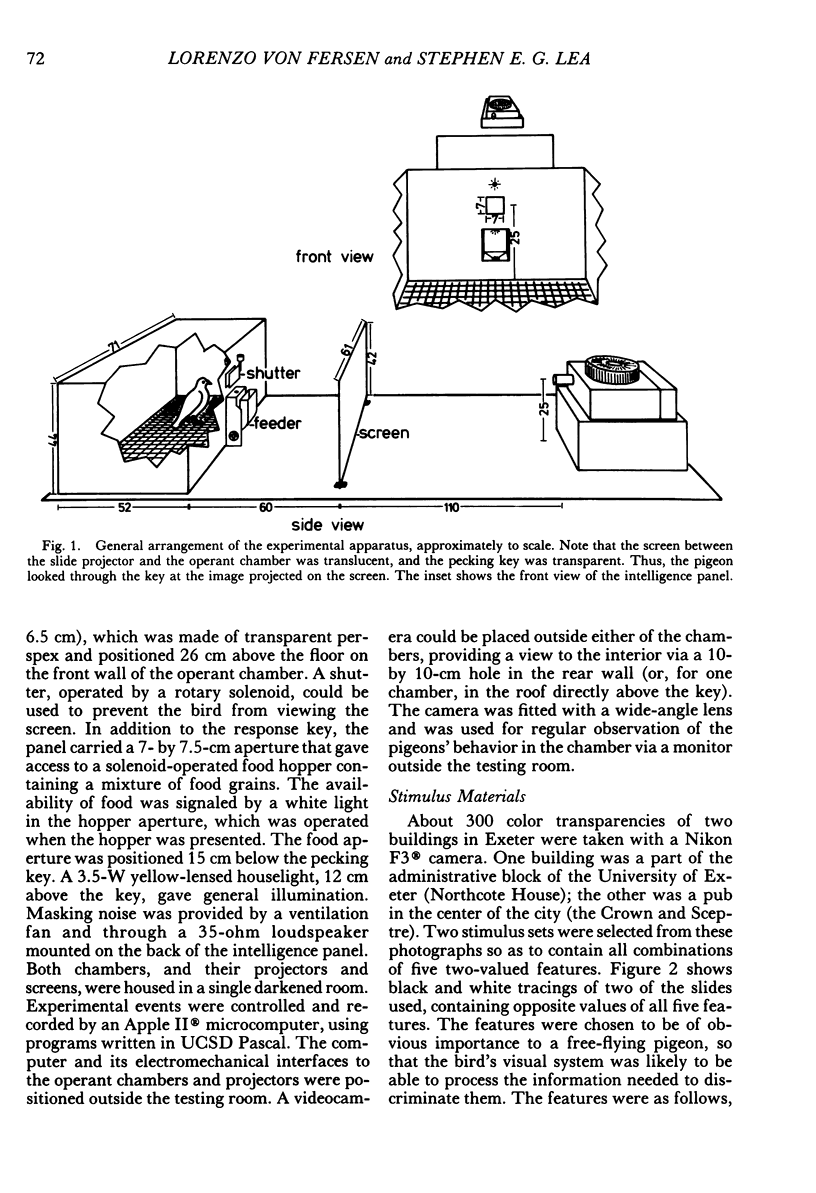





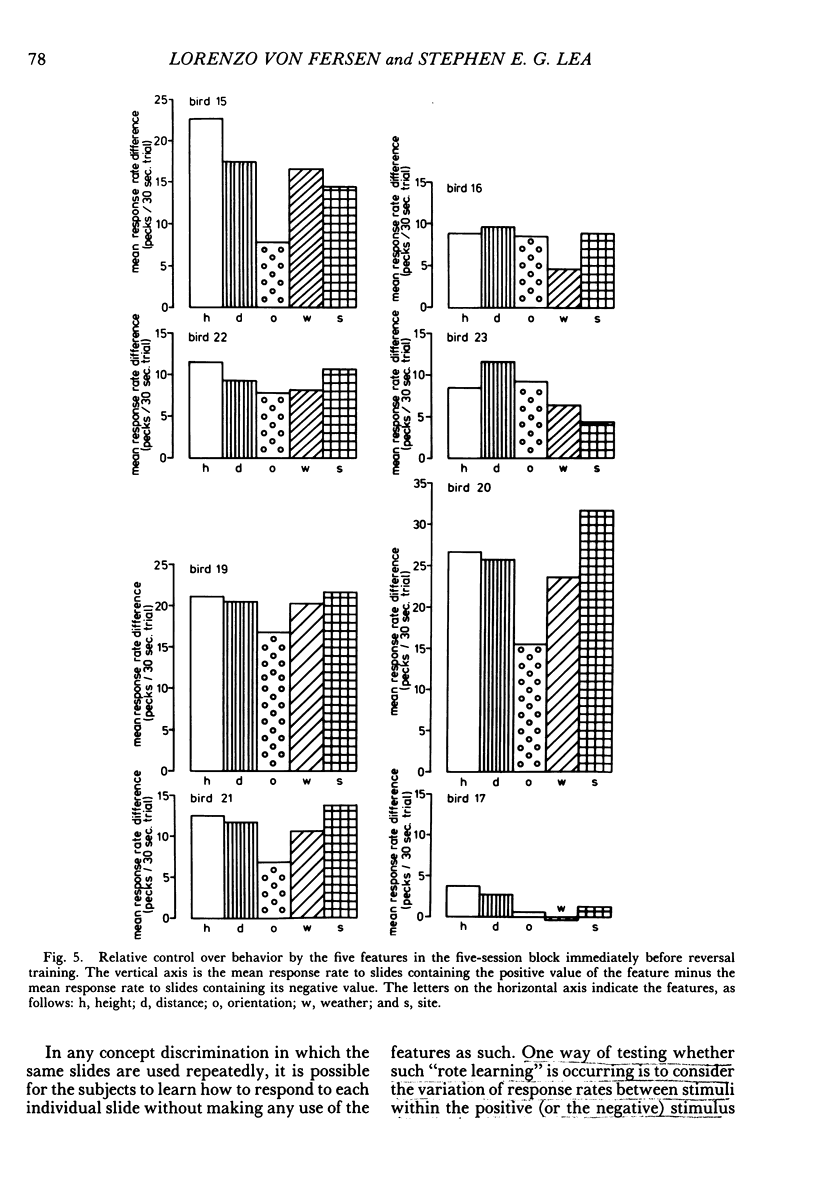

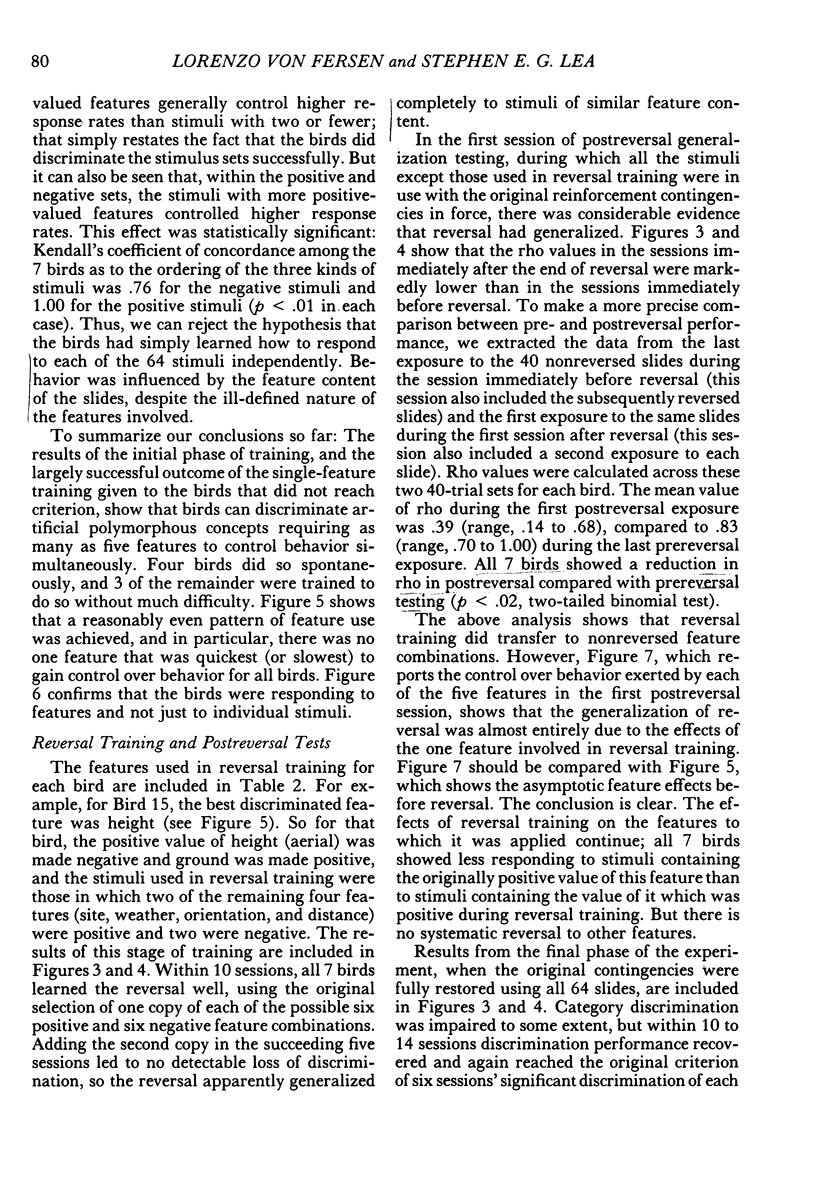

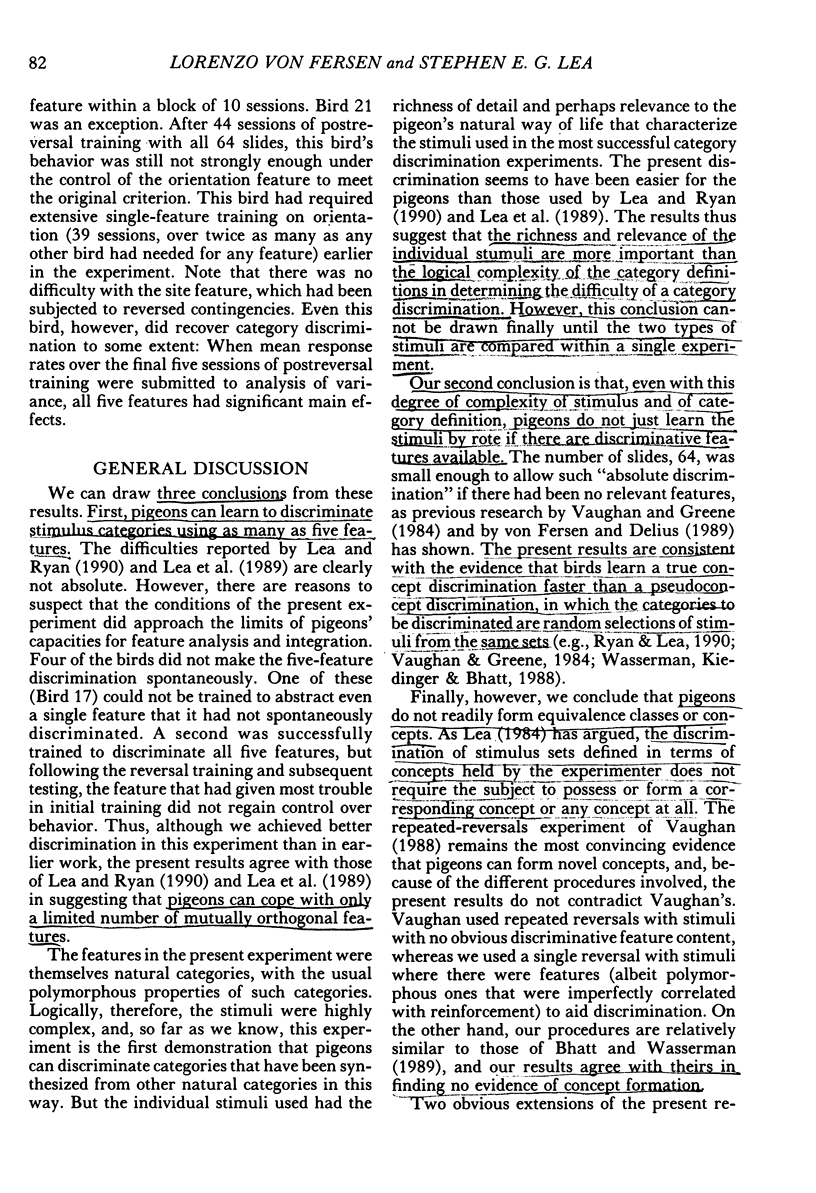
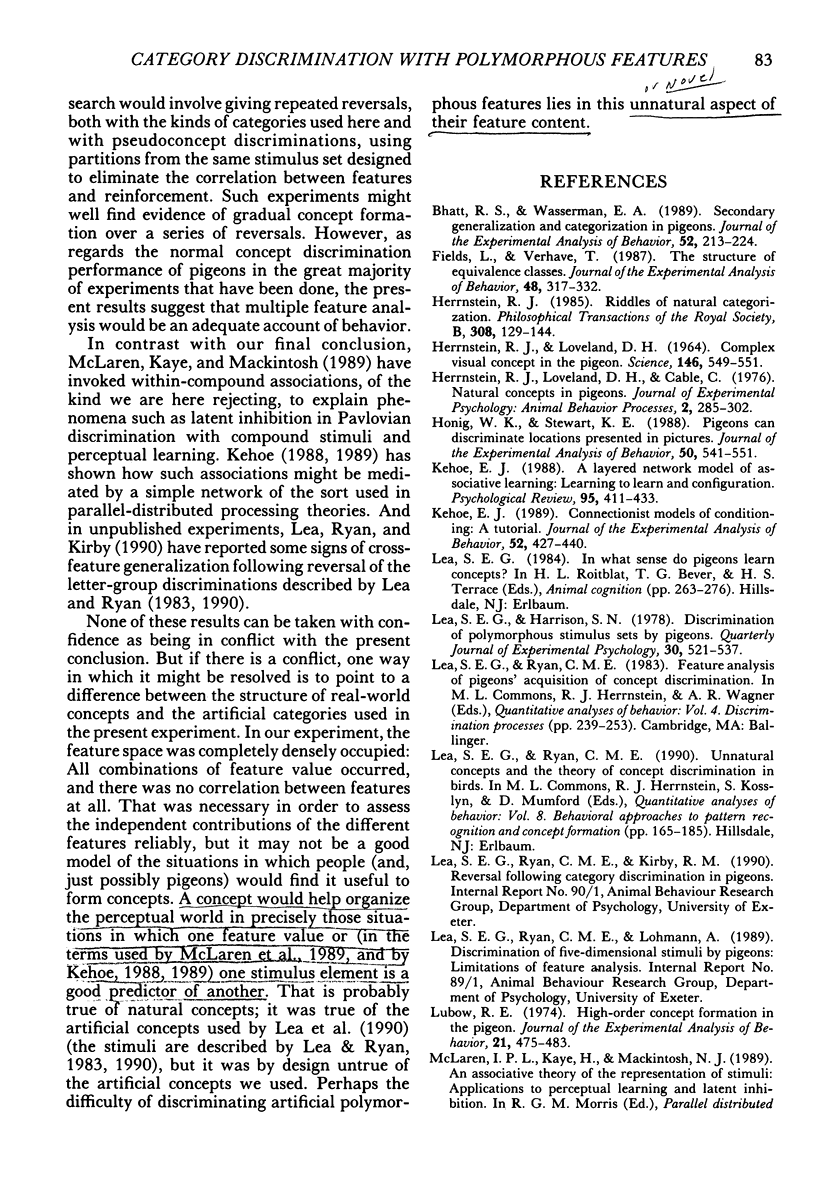
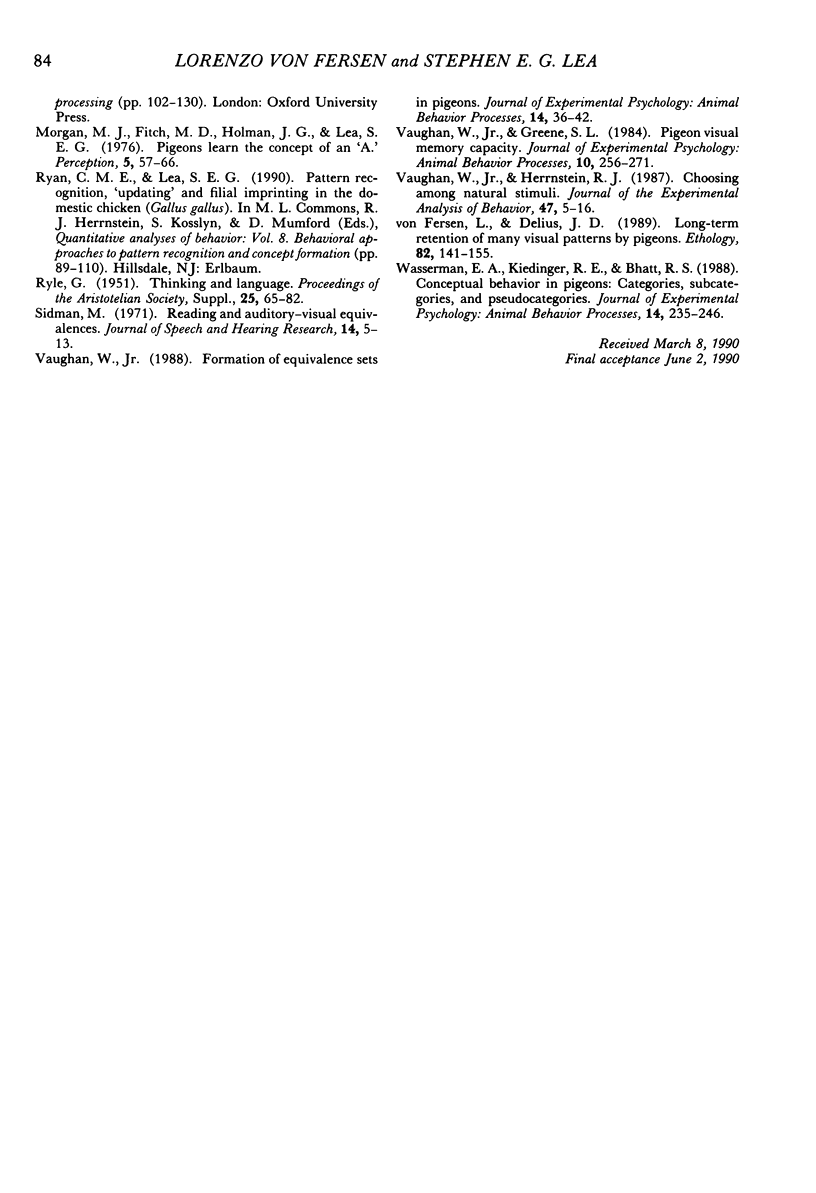
Selected References
These references are in PubMed. This may not be the complete list of references from this article.
- Bhatt R. S., Wasserman E. A. Secondary generalization and categorization in pigeons. J Exp Anal Behav. 1989 Nov;52(3):213–224. doi: 10.1901/jeab.1989.52-213. [DOI] [PMC free article] [PubMed] [Google Scholar]
- Fields L., Verhave T. The structure of equivalence classes. J Exp Anal Behav. 1987 Sep;48(2):317–332. doi: 10.1901/jeab.1987.48-317. [DOI] [PMC free article] [PubMed] [Google Scholar]
- HERRNSTEIN R. J., LOVELAND D. H. COMPLEX VISUAL CONCEPT IN THE PIGEON. Science. 1964 Oct 23;146(3643):549–551. doi: 10.1126/science.146.3643.549. [DOI] [PubMed] [Google Scholar]
- Hernstein R. J., Loveland D. H., Cable C. Natural concepts in pigeons. J Exp Psychol Anim Behav Process. 1976 Oct;2(4):285–302. doi: 10.1037//0097-7403.2.4.285. [DOI] [PubMed] [Google Scholar]
- Honig W. K., Stewart K. E. Pigeons can discriminate locations presented in pictures. J Exp Anal Behav. 1988 Nov;50(3):541–551. doi: 10.1901/jeab.1988.50-541. [DOI] [PMC free article] [PubMed] [Google Scholar]
- Kehoe E. J. A layered network model of associative learning: learning to learn and configuration. Psychol Rev. 1988 Oct;95(4):411–433. doi: 10.1037/0033-295x.95.4.411. [DOI] [PubMed] [Google Scholar]
- Kehoe E. J. Connectionist models of conditioning: A tutorial. J Exp Anal Behav. 1989 Nov;52(3):427–440. doi: 10.1901/jeab.1989.52-427. [DOI] [PMC free article] [PubMed] [Google Scholar]
- Lubow R. E. High-order concept formation in the pigeon. J Exp Anal Behav. 1974 May;21(3):475–483. doi: 10.1901/jeab.1974.21-475. [DOI] [PMC free article] [PubMed] [Google Scholar]
- Morgan M. J., Fitch M. D., Holman J. G., Lea E. G. Pigeons learn the concept of an "A". Perception. 1976;5(1):57–66. doi: 10.1068/p050057. [DOI] [PubMed] [Google Scholar]
- Sidman M. Reading and auditory-visual equivalences. J Speech Hear Res. 1971 Mar;14(1):5–13. doi: 10.1044/jshr.1401.05. [DOI] [PubMed] [Google Scholar]
- Vaughan W., Herrnstein R. J. Choosing among natural stimuli. J Exp Anal Behav. 1987 Jan;47(1):5–16. doi: 10.1901/jeab.1987.47-5. [DOI] [PMC free article] [PubMed] [Google Scholar]


